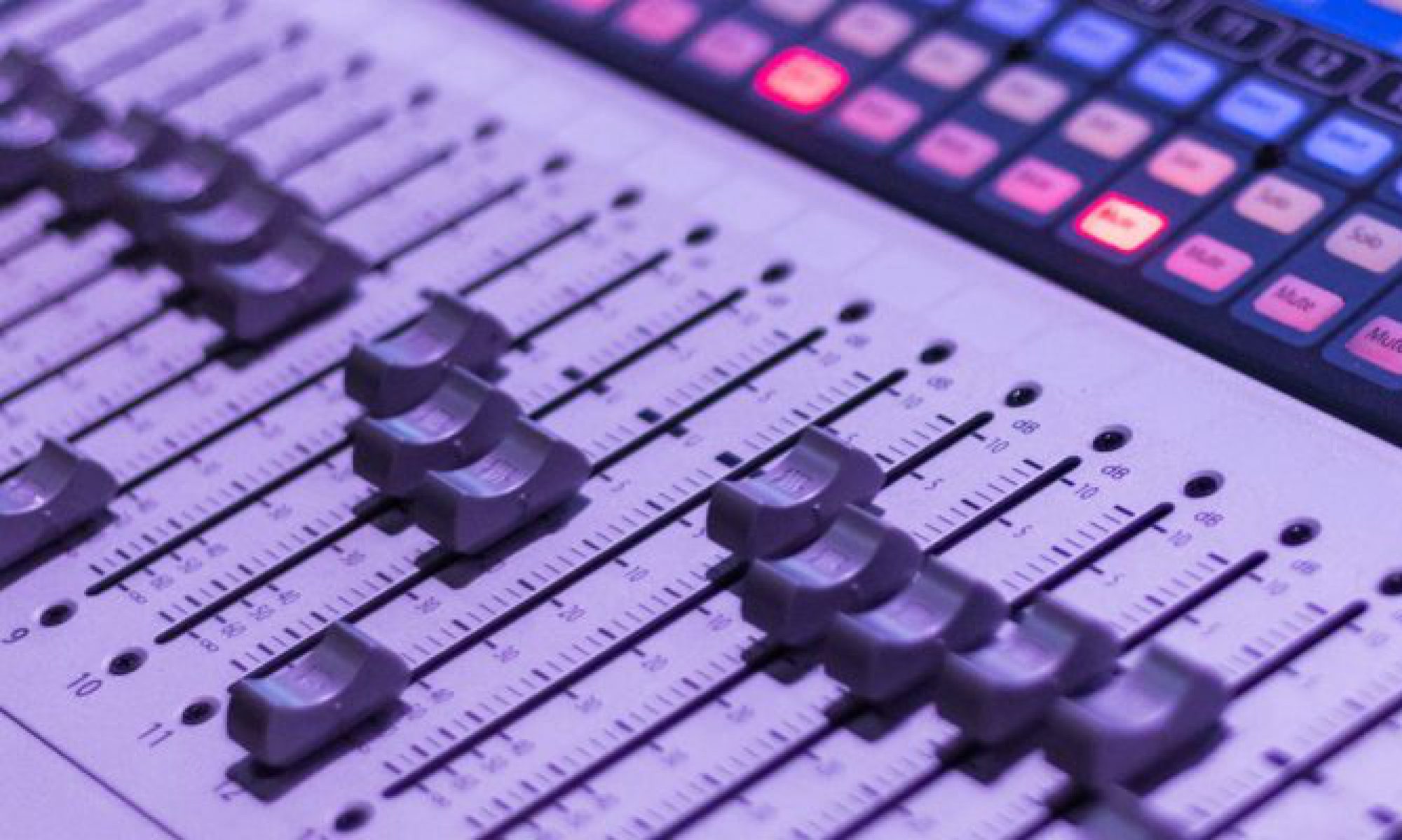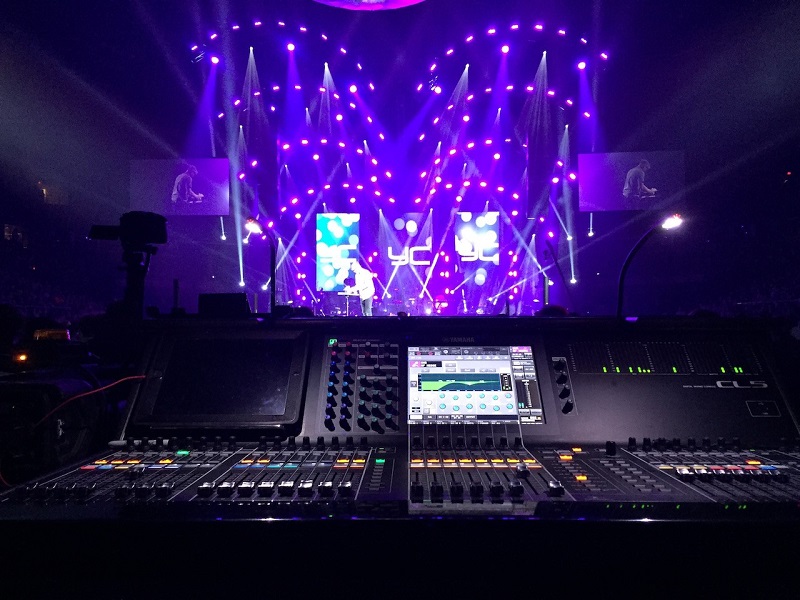Welcome to a new “How To” series talking about mixing for broadcast. With all the options to live stream these days more and more churches are in the market to live stream their services. While there are a lot of opinions on this and while others can weigh into the should we category, I’m going to dive into the how should we category. This series is aiming to be an audio based primer for what to do if you’ve decided to take the plunge and throw your service up for the world to see. Whether you’re diving in with multiple cameras, a switcher, live graphics, and a whole crew or you’re starting small and just streaming from a single camera, live streaming means commitment. Even if you don’t end up needing a ton of extra volunteers you do need to make sure that they all adequately trained and able to mix for broadcast. Depending on how you move forward this may mean learning a new console or learning to more efficiently use the one you already have. Don’t be afraid to ask another church who is already doing this for some help or advice, maybe one of their techs can come out and help train your team. It’s also important to consider how your audio is getting to the stream (i.e. – Is it just the FOH mix? Aux off the console? Some form of split and a separate broadcast console?). It’s also wise to make sure there is enough physical I/O to accommodate connecting to a streaming encoder of some kind. Regardless of your intentions or capabilities, I hope this series gets you started down the right path. All of the options we will discuss below offer differing amounts of control and the level of skill required to mix for broadcast well.
The first and easiest is to just send your FOH mix straight to broadcast. This is definitely the easiest but it is also the least flexible mix to operate because it just follows your mix for your main output. Most of the time it would be advisable to use groups or an aux allowing you to craft a broadcast mix off your FOH console but if you don’t have groups available to you, and you don’t have a spare aux just duplicating your master mix gives you a way to send your mix out. Mixing a large space, even a small sanctuary is very different from the experience of hearing that same service on a phone, laptop, TV, or headphones (this is the pitfall of this option). The differences tend to be in EQ choices, broader fader moves, and maybe more or less verbs/FX as the space calls for it. When someone is mixing for TV they’re often in a much smaller space and only have to deal with making the input signals sound as good as possible without having to worry how the content coming out of loudspeakers will affect the overall mix and sound quality. If you have the ability to send your main buss to a mono or stereo matrix (preferably stereo), this gives you an easy way to attenuate the overall level up or down as needed. A lot of really talented FOH guys use this method with great results, but it takes a skilled hand to pull it off. A subset of this idea that can be done if you have a flexible digital console is to send your main mix to a matrix but also send your effects returns to that matrix to add to it and fill it out (allowing you to attenuate up or down as needed to compensate for the difference between your room and the broadcast). This requires some extra routing and some challenges like creating a matrix for your mains and sending your effects returns to it separately as well. You could even have special effects returns for the broadcast feed. Again, while an easy “set it and forget it” method, it does require you to be very conscious of your mix and how it will sound in a broadcast environment. Lastly, the biggest question you have to ask yourself is if someone isn’t in the room, can they hear what is going on? I can’t rely on vocal mic bleed to mic the drums, you actually need to at least mic everything a little bit.
The next option uses groups or subgroups to build a broadcast mix. Like the first, this can be done with most analog or digital consoles. If you’re already mixing with subgroups this is a great way to craft a good sounding broadcast mix. If you’ve already broken your mix up into subgroups you can easily route those groups to a matrix for broadcasting. Then it’s just a matter of adjusting those groups to taste (often times lowering heavily dynamic sources). This is also nice because any level changes you make in the main mix follow in your broadcast mix. This version also allows you to keep the overall level of anything in a group where it needs to sit so if you have let’s say groups for drums, keys, guitars, tracks, singers and effects, you can mix the relative level for all these groups but as you track certain instruments or singers at FOH they get louder or quieter in your broadcast mix as well. You can use the groups to mix in the correct overall level of each subset of inputs you’ve put into that group. I’ve heard great broadcast mixes that were just stems (i.e. subgroups, etc) off the FOH console. The only downside to this is you don’t get the individual control of channels, for instance, if your drums fit well overall into the mix but there’s just too much hi hat, because let’s face it, there’s ALWAYS too much hi hat… You would have to adjust the hi hat for the FOH mix for the change to track in the broadcast mix. Joking aside, this is a great way to handle a broadcast mix from FOH without tying up an aux buss and it gives you way more control than just taking a feed from the main buss. You would then balance your band groups against your video and speech groups to help normalize the mix as a whole.
The third option is great, if you, for whatever reason, aren’t using groups. This is also easy to do on analog or digital consoles and is probably the easiest to setup aside from using the main buss. Using a post-fade aux is a great way to get a good mix. It gives you all the benefits of the main buss or subgroups options, but gives a little more granular control. To accomplish this all you have to do is set up one or two busses as post fade on your console. If it’s analog you’ll need to be mindful of the fact that most consoles pre-post fade buttons control 2-4 auxes at a time. Another issue with analog consoles is that if you decide to use two auxes to mix in stereo you’ll need to treat the send levels as your pan for those sends. In the digital realm it’s a little easier. Most consoles allow you to create a stereo aux or combine two mono auxes. From there you can automatically set all the sends to pre or post fade and adjust panning as needed. After you’ve done that it’s just a matter of adding input channels to the aux. I typically start with everything at around unity and adjust from there. Since all the channels are post-fade, any mixing you do in the room follows suite in your broadcast. If a singer sings a solo, you can turn them up in both places at once. Another one of the reasons I really like this method is that it allows you to help even out your output level to the stream. In most church services the worship portion of the service is typically much louder than the sermon and the input level follows suit. With a post fade aux you can push the send level of your pastor’s lav mic or podium mic to more closely match the loudness of your worship service. This will be a huge benefit to those watching your stream. When using an aux to stream your broadcast you can also work a little better at controlling the feed. Yet another great feature is the ability to individually tweak the mix. Unlike using groups or the main buss you can easily go to an individual channel and adjust it. If your hi hat channel is too loud, you can just turn the send down to that aux without affecting the FOH mix. If you have a digital console you can even use a mobile device, PC, or remote controller to make adjustments as well. This can be a massive benefit because you get a lot of the same benefits of having a dedicated broadcast console but at a much-reduced price as a tablet (or an old computer you already have around) and a pair of headphones are much cheaper than a second board for broadcast. Mixing a post fade aux for your broadcast is probably the most flexible option for using your existing FOH desk to stream with.
Whether it’s analog or digital you can have a lot of control and tweaking without having to make any financial investments if you don’t want to. Regardless of which of these methods you choose, it’s incredibly important to have a properly tuned and balanced PA which will help your mix translate better in a studio environment. Next week we’ll take a look at setting up a whole separate board for broadcast, some of the challenges, some of the advantages, and the best practices for doing so. If you’re interested, subscribe to this blog at this link so you can get an email whenever new content is posted. As always, comment below or respond on Facebook with questions! See you next week!
P.S. – If you didn’t already notice, we have a new author, Justin Fugett! To help you get to know who is behind the scenes here I’ve launched a new page on the site with bios for each author. Be sure to check it out at this link!



This is really helpful – I’ve been wondering about setting the live stream to post fade but wasn’t sure if it was a good idea or not, so good to hear from someone else!
I’m glad to hear that Rhoda, I find using post fade for a streaming mix is an easy way to get a good sounding mix. However, PreFade can work if you’ve got a team member who wants to mix off an iPad or something. It’s all just using the right tool for your situation. Thanks for commenting.